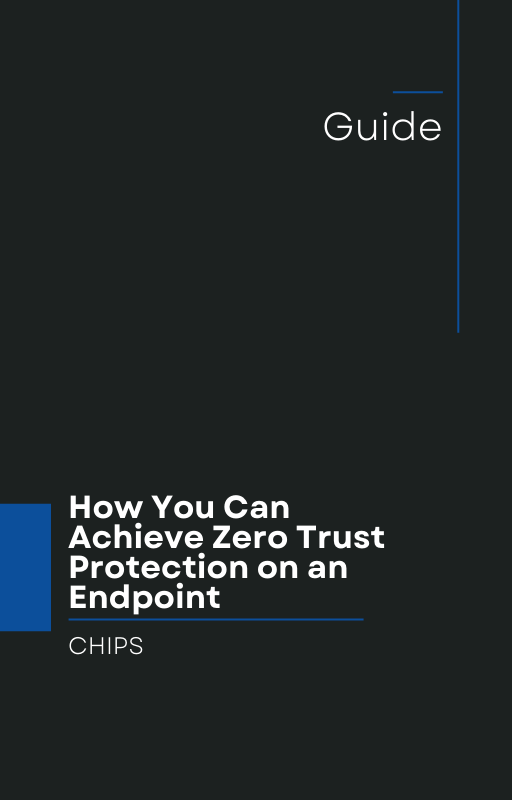The recent surge of CyberVolk ransomware attacks targeting critical infrastructure, research institutions, and government agencies should be a warning to every business: the conventional “detect and respond” approach is no longer enough. GBHackers+2Rapid7+2
In this post, we’ll break down what the CyberVolk threat tells us about the changing nature of ransomware, explore why relying solely on detection and response is risky, and show how the AppGuard platform offers a more proactive, isolation-and-containment approach that can block such attacks in their tracks.
What is CyberVolk and why it matters
CyberVolk began operations in mid-2024, emerging from a hacktivist origin into a full-fledged ransomware actor. Their targets to date include government entities, scientific research centers, and critical infrastructure.
Some of the technical details that make CyberVolk dangerous:
-
It appends a special extension (often
.cvenc) to encrypted files, effectively locking them down. -
The ransom note is delivered as a “CyberVolk_ReadMe.txt” and demands payment (typically ~$1,000 in BTC or USDT) to restore access.
-
It has multi-platform ambitions: researchers have documented builds for Windows, Linux, and even ESXi (hypervisor) targets.
-
It leverages lateral movement and network propagation techniques (e.g. exploiting SMB, removing shadow copies, and spreading across shared drives).
CyberVolk is not unique—but it embodies the next generation of ransomware threats: faster, more adaptive, and more willing to cross traditional boundaries.
Why “Detect and Respond” is no longer enough
Historically, many organizations built cybersecurity strategies around:
-
Detect (via antivirus, EDR, intrusion detection)
-
Respond (investigate, isolate, remediate, recover)
That model works reasonably well when threats are less sophisticated. But in the face of modern ransomware like CyberVolk, it falls short for several reasons:
1. Time is the attacker’s advantage
Ransomware can encrypt hundreds or thousands of files in seconds once unleashed. By the time detection alerts arrive, much damage may already be done.
2. Attacker can disable detection tools
Advanced ransomware often attempts to disable or bypass antivirus, endpoint detection, or logging agents. If your response relies on those very tools, you may be left defenseless once they’re neutralized.
3. Lateral movement spreads damage
Even if one machine is compromised, the attack can move sideways across the network. A “respond after detection” mindset means by the time you react, multiple systems are already infected.
4. Recovery is costly and uncertain
Even with backups, restoring systems takes downtime, business disruption, and expert effort. Paying ransom is risky and doesn’t guarantee decryption.
In short: detection and response is reactive, and when faced with fast, aggressive ransomware, reactive is too slow.
The better path: Isolation and containment
To defend effectively in this new era, organizations must shift from “detect and respond” to “isolate and contain.” The idea is to prevent or block malicious actions immediately, rather than waiting to see evidence.
Isolation and containment means:
-
Automatically blocking malicious behaviors at runtime, before damage is done
-
Segmenting and sealing off compromised parts so an infection cannot spread
-
Failing closed — when suspicious behavior is detected, cut off execution, not just alert
-
Preventing escalation by stopping privilege abuses, code injection, filesystem encryption, and interprocess tampering
This approach is proactive and decisive. Instead of waiting for evidence, you stop the malicious operations before they escape.
Why AppGuard is the endpoint solution you need
For over a decade, AppGuard has delivered on the promise of proactive endpoint protection. Its track record includes real-world deployments in high-stakes environments, including government, healthcare, and enterprise. (Yes, commercial licensing is now available.)
Here’s why business owners should seriously consider adopting AppGuard:
-
Proven track record
AppGuard has successfully prevented zero-day exploits, fileless attacks, ransomware, and unknown threats in environments where traditional defenses failed. -
Behavioral hardening, not signature dependence
AppGuard does not rely on signatures or detection of known threats. Instead, it enforces a strict control policy of allowed behaviors and blocks all others. That means even new, never-before-seen malware cannot sneak past. -
Containment by design
When a process attempts forbidden actions—like injecting code, writing to protected files, or modifying system resources—AppGuard intervenes instantly, isolating that process and preventing lateral spread. -
Low impact on operations
Because it focuses on controlling actions rather than scanning everything, it has minimal performance overhead and requires less frequent updates. -
Scalable and manageable
Suitable for small to large organizations. Administrators can define policy exceptions, whitelist necessary applications, and monitor incidents.
When the threat is CyberVolk or its next variant, AppGuard doesn’t wait to detect the ransomware—it stops it from executing the malicious behaviors in the first place.
What business owners should do now
-
Reassess your security posture
If your primary defense is detection and response, you are exposed. Realize that the threat landscape demands containment-first strategies. -
Pilot AppGuard in a critical environment
Try AppGuard in a high-value or sensitive segment of your network. See for yourself how it responds when a suspicious file tries to run. -
Plan for full deployment
Once confident, roll out AppGuard across your endpoints. Combine it with network segmentation, backup strategy, and good cyber hygiene (patching, MFA, least privilege). -
Test incident response under containment mode
Run drills to confirm that when AppGuard isolates a process, your escalation and recovery procedures can handle it. -
Train your team
Your IT/ops staff need to understand how isolation differs from remediation. They’ll need to review logs, approve safe exceptions, and respond to contained events.
Conclusion & call to action
The CyberVolk ransomware wave is a stark reminder: in the modern threat climate, waiting to detect and respond is too little, too late. Business owners have to adopt solutions that emphasize isolation and containment — stopping malicious actions before they proliferate.
AppGuard offers precisely that — a decade-proven platform that defends endpoints by design, not by chasing signatures. Its new commercial availability means enterprises like yours can benefit from the same robust defense that formerly only advanced institutions had access to.
If you run a business and care about preventing these types of ransomware incidents, let’s talk. Contact the team at CHIPS today and discover how AppGuard can shift your security model from reactive defense to proactive containment. Don’t wait until the next alert — reach out now, and let’s make your environment resilient.
Like this article? Please share it with others!

October 5, 2025

Comments